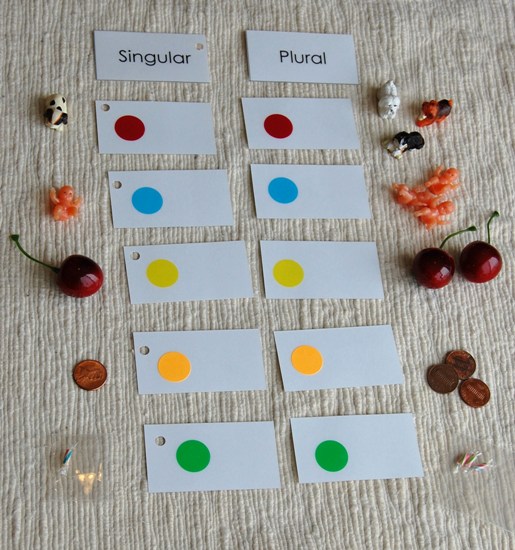If you’ve been following my blog for awhile, you’ll know that one thing I love about Montessori is how we use small objects to enliven our materials. I’ve talked before about using objects in Continent Boxes and for Pink, Blue, and Green Series work.
There are some other great ways to use objects, especially in the Language area, so I had some fun today taking pictures for all of you. Hopefully you’ll find a few new ideas here.
As I was taking pictures, I was thinking about the reason behind using three-dimensional objects rather than just two-dimensional pictures. After all it is extra work and extra money to do so. I came up with two reasons:
1. The child finds the work more engaging (especially if they are in the sensitive period for small objects)
2. The work is more memorable because the objects have been touched and sorted (they add a tactile component to the work)
If you can think of others, I’d love to hear about them!
Objects Make Grammar Work Exciting
Here is a set of objects used with beginning noun work (the child simply sets out the objects and places a black triangle over each one):
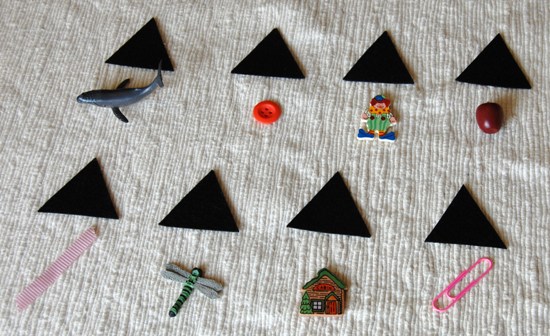
And another set, for learning about articles (both definite, “the” used when referring to a specific one, and indefinite, “a” or “an” used when referring to one of many):
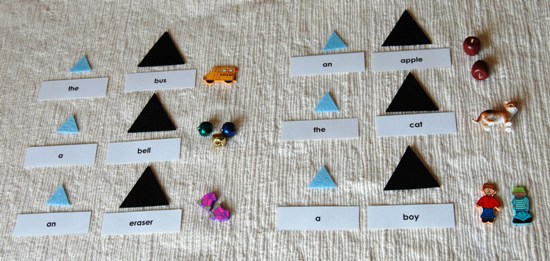
This set is a great way to learn about adjectives (I didn’t show all the objects in this set; there is another of each object shown in a different color or size so that the child has to choose the object that fits the adjective):
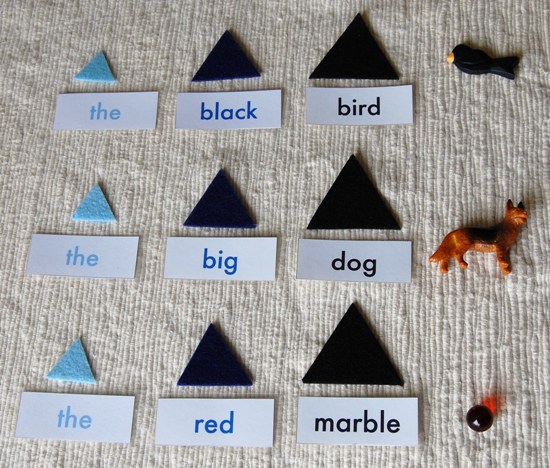
And last, always a classroom favorite, objects used to teach prepositions:
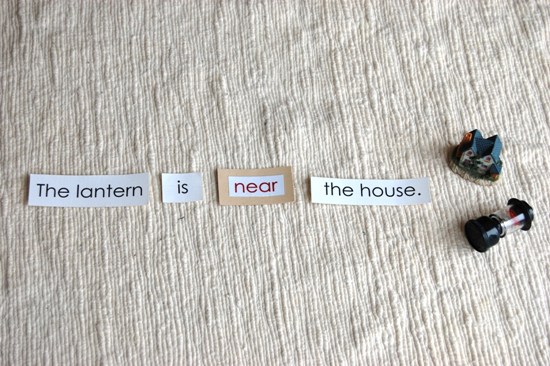
For the prepositions set, I used 4 random objects and made labels using each as the beginning of the sentence (capitalized) or the end of the sentence (with a period). The child can make all sorts of combinations using the objects, the verb “is”, and one of the many prepositions:
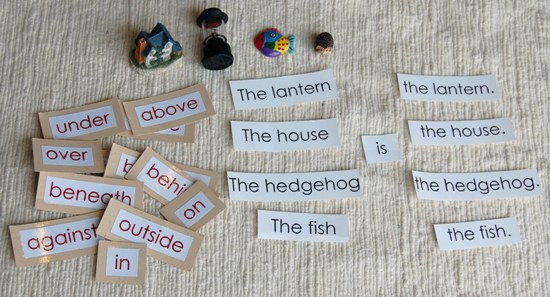
Objects Liven Up Word Study Too
I sell a set of Singular and Plural Cards that are meant for older children; they don’t need objects and you’d be hard-pressed to find them for many of the words in the set.
However, I have a few Singular and Plural Sets (I’m calling them Beginning Singular and Plural Sets 1, 2, and 3) that are just right for objects.
Here’s Beginning Singular and Plural Set 1, using only short vowel words :
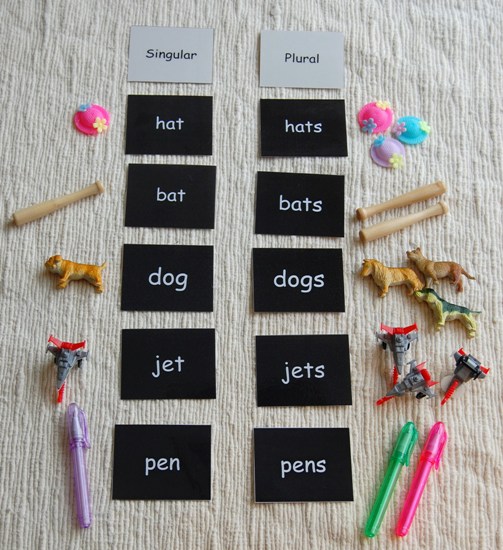
And this set, Beginning Singular and Plural Set 2 (all short vowel words with one blend, “frog”). I just realized that I have “Singular” and “Plural” switched, so I clearly have not yet internalized this concept!
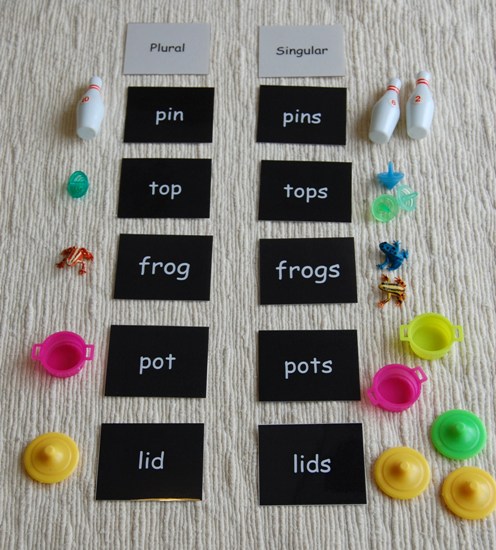
I also made my own set to teach the “change the y to an i and add ‘es’” concept; Beginning Singular and Plural Set 3:
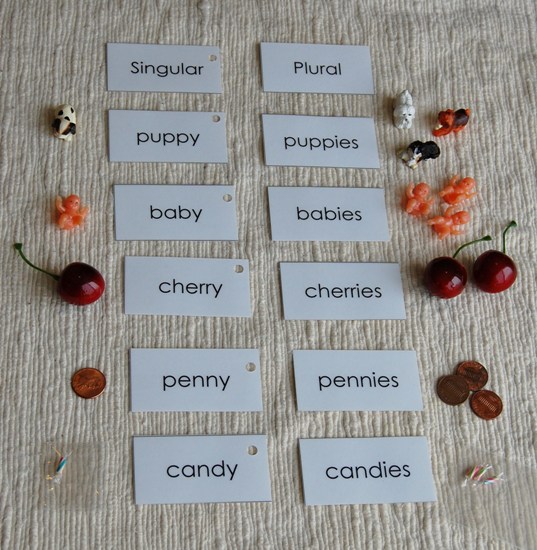
You might notice something interesting in this last set: half of the cards have a hole punched in the corner. It’s a little tip I picked up from my Montessori trainer, Sister Mary.
She would punch a hole in one set of the cards (either all the singular or all the plural, in this case) so that the child could keep the two halves separate. I still use this method, out of habit, but you could also just rubberband the two sides separately and accomplish the same thing.
Something else I do to all my cards, from language to geography to math to geometry, is code the backs with colored stickers so it’s easy for the child to check their own work; I flipped these over so you can see:
